Why are stones used in mosaics and what values do they encompass?
“Stones carry with them the history of the world. And very often it is they which inspire in us the work itself and its intrinsic message.”
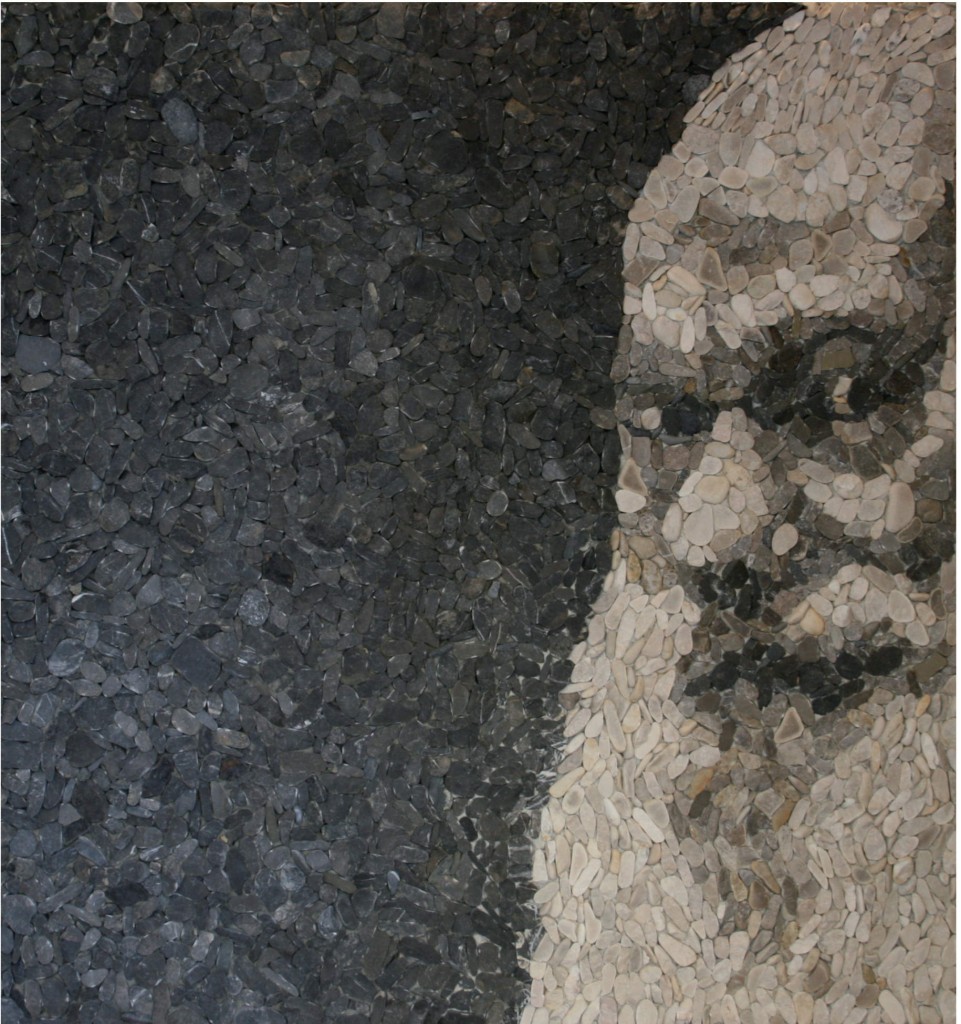
[Stonework Personages] – Tiziano Terzani by Mohamed Chabarik / Stones from the TagliamentoRiver)
Laura Carraro and Mohamed Chabarik speak of the great value of stones in the mosaic. Round, smooth stones; rough, porous stones; white, brown, pink, green or reddish ones. Apparently silent and still, stones are actually pulsating matter.
The use of stony material to carry out mosaics is a rather innate choice, but would appear to be even more so among the mosaicists of the Spilimbergo workshop. Almost as if it were an essential characteristic for a school originated and developed between two rivers – the Meduna and the Tagliamento – which are famous for the particular beauty and texture of their stones.
(Floor of the Mosaic School of Friuli, personifications of the rivers Meduna and Tagliamento)
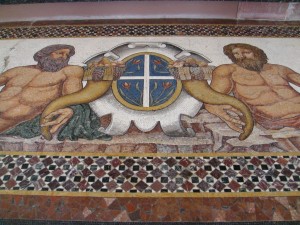
For Laura and Mohamed it is a choice of style that is rooted in the deep meaning that each stone encompasses.
“When we choose to use stones in our works, we do so for different reasons. First of all, for the final effect: the mosaic appears smoother, because the tesserae are round or oval. But what we like most of all is the stone as a metaphor, its deep meaning. In fact, to become what it is, achieve its ultimate shape, a stone has followed a millenary historical path. Stones carry with them the history of the world.
And furthermore, compared with other materials, they maintain their direct contact with nature.
It is wonderful to see how, once we have used what the nature has to offer us, it becomes a work of our own, a work that is then ours to offer. It is like a loop.”
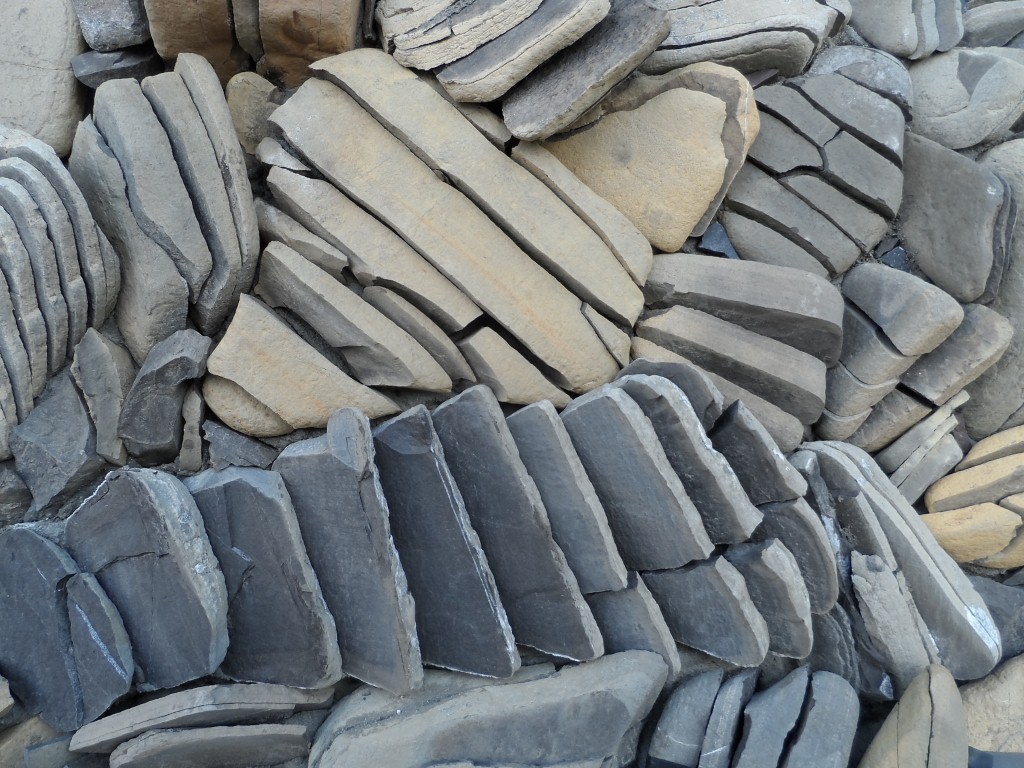
(Stone texture –Memory by Laura Carraro / Stones of the Saisera Valley)
The cut
“The approach to cutting does not change; we cut stones by hand with a the martelline, as we do with enamel and other materials, but we do less dividing and reducing, so that stones maintain their original aspect. A stone is therefore more immediate; it preserves its shape and is subjected to less human manipulation. But its value is not diminished by this. As a matter of fact, its great worth is vested in the research undertaken, the choice made, and the transport.”
(Stone texture – The Holy Family by Laura Carraro)
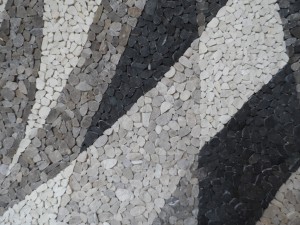
The gathering
“That of the gathering is a deeply significant practice that harks back to the terrace-makers of ancient times. We, too, perpetuate this historical ritual, as they did.
This is the moment devoted to attentive selection. The value of a mosaic entirely made of stone encompasses the value of nature, but also that of time, of the hours spent bending over a river bed, choosing the most beautiful shapes and colours.
Once, having to choose the stones for the walls of a shower, we involved the customer who had commissioned it to come to the river with us to select and collect them.”
(Shower – River Stones)
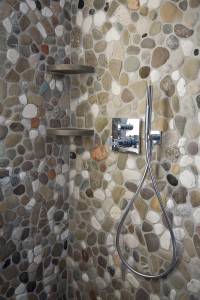
Letting shape inspire us
“Stone has its own shape and very often it is the shape itself which inspires us with the work and its metaphor. For example, the form of the stone inspired the “Petra Musiva” collection, as well as the daisies of the “20Quadro” and the works that are to be installed in the Altrememorie [Other memories] Art Park, made out of stones coming from the very area of the park itself, in Saisera Valley.
The physicality of the stone therefore becomes an integral part of the meaning of the work.”
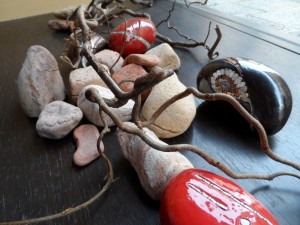
(Petra Musiva – collection in collaboration with Daniela Isola)
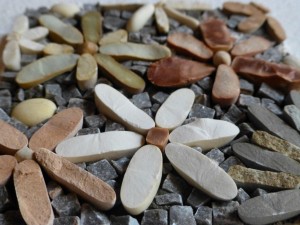
(Detail 20Quadro)
“Stones are sculptures made by the sea and by rivers. Each of them is different from the others, each of them is unique, like works of art.”
Bruno Munari – „From Afar It was an Island”
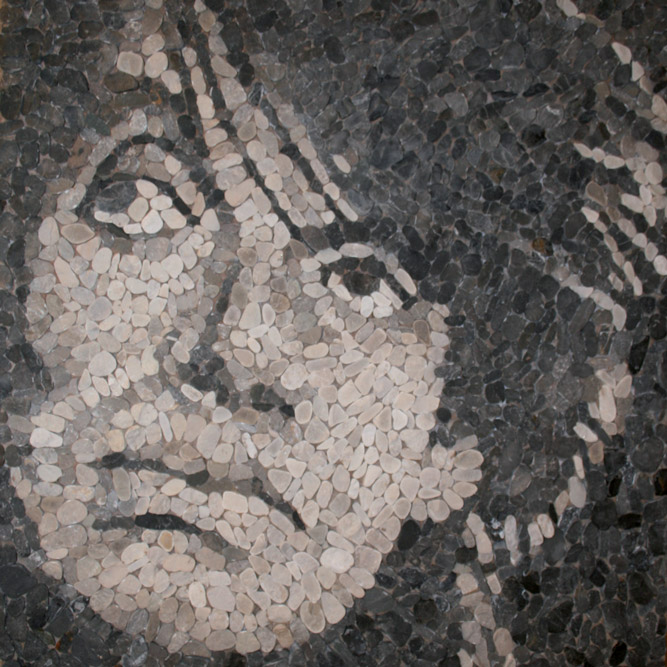
(Stonework Personages– Fabrizio De André by Mohamed Chabarik / Stones from the TagliamentoRiver)
Article by Laura Pizzini
Translation by Elisabetta De Martin.




